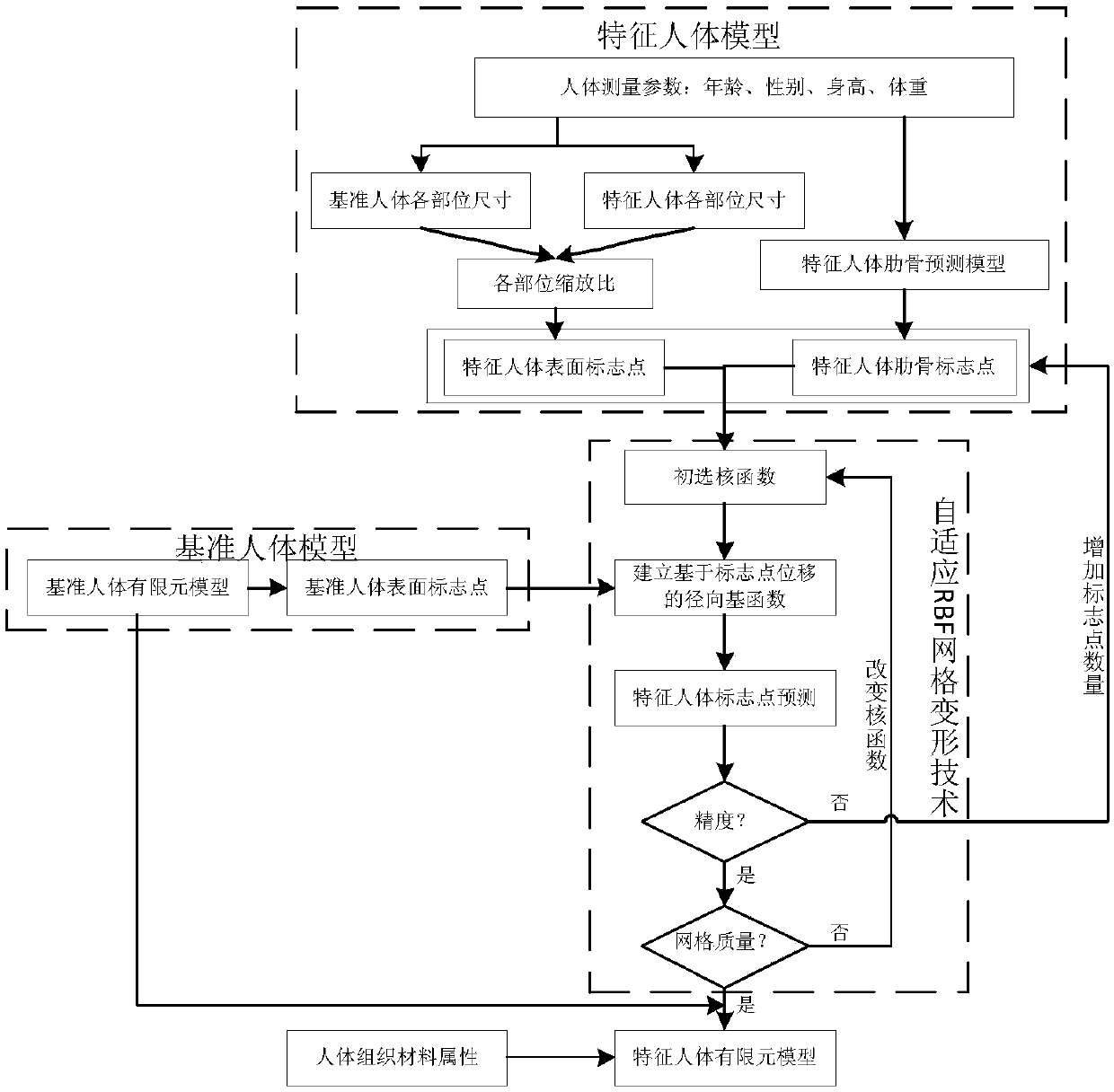Feature human body finite element modeling method based on adaptive RBF network deformation technology
A technology of mesh deformation and modeling method, which is applied in the field of automotive passive safety, can solve the problems of time-consuming and labor-intensive modeling process, and achieve the effects of saving modeling cost, shortening modeling time, and simplifying the modeling process
- Summary
- Abstract
- Description
- Claims
- Application Information
AI Technical Summary
Problems solved by technology
Method used
Image
Examples
Embodiment Construction
[0032] The preferred embodiments of the present invention will be described in detail below with reference to the accompanying drawings.
[0033] Such as figure 1 As shown, the characteristic human body finite element modeling method based on adaptive RBF mesh deformation technology includes the following steps:
[0034] S1: Reference model and characteristic human body finite element model marker point selection;
[0035] S11: Determine the basic anthropometric parameters of the human body finite element model to be established, including age, gender, height, weight, etc.;
[0036] S12: Divide the human body finite element model into several parts, including head, neck, chest, abdomen, buttocks, thighs, calves, upper arms, and forearms, and then based on the relevant anthropometric database, benchmark model and each part of the model to be built dimensions, and determine the scaling ratio between the baseline model and the model to be built according to these dimensions;
...
PUM
 Login to View More
Login to View More Abstract
Description
Claims
Application Information
 Login to View More
Login to View More - R&D
- Intellectual Property
- Life Sciences
- Materials
- Tech Scout
- Unparalleled Data Quality
- Higher Quality Content
- 60% Fewer Hallucinations
Browse by: Latest US Patents, China's latest patents, Technical Efficacy Thesaurus, Application Domain, Technology Topic, Popular Technical Reports.
© 2025 PatSnap. All rights reserved.Legal|Privacy policy|Modern Slavery Act Transparency Statement|Sitemap|About US| Contact US: help@patsnap.com



